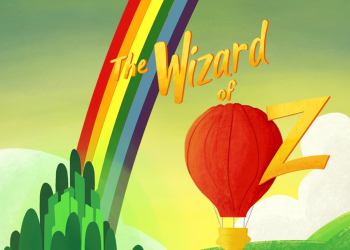TINMAN- Empathy & Emotions

The Tinman is the second companion to join Dorothy on her journey to meet the Wizard and to seek what he believes he has always been missing: a heart. The Tinman explains that he once was a human woodsman, but an ax that was cursed by the Wicked Witch of the West left him gradually replacing each of his body parts with pieces made of tin. However, he never received a replacement heart, and he believes he no longer has the ability to love. Along the journey, the Tinman shows himself to be a particularly caring, sensitive companion. Heart or no heart, the Tinman shows empathy all throughout the journey. This section explores the meaning of empathy, asking students to define empathy, articulate and embody their emotional responses to the story, and imagine themselves in the shoes of a character from the story.
ACTIVITY 1: Defining Empathy
Before diving deeply into exploration of empathy, it will be important for your students to have a definition and a deep understanding of what empathy means. Use any of the following methods or discussion questions to define empathy with your students:
- Chalk Talk: A chalk talk is a silent, visible ‘discussion’ that takes place on a chalkboard or white board. Begin with a term or a question in the middle of the board, and circle it – in this case, “Empathy” or “What is empathy?” One by one or a few at a time, students walk up to the board and add their responses branching off of the center question. Then, students who have responded pass their markers to students who have not yet responded. As more students add, students can respond not only to the original prompt, but to each other’s responses by branching off of their peers’ responses, writing questions about their peers’ responses, connecting responses with lines or arrows, or affirming peers’ responses with a star or an underline. Once all students have participated once, students can return to the board for a second time to add more to the discussion.
- Group Definition: Ask each student to write out their own 2-3 sentence definition of empathy. Once students have completed their own definitions, students pair up, share their definitions, and write a new definition using the strongest parts of each of their original definitions. Then, two pairs join into groups of four students, repeating the process of sharing and collaborating to create a new definition from the strongest parts of each. Repeat the process until the whole class is two groups collaborating together to create the strongest definition possible of empathy.
- Empathy Gallery: Provide students with paper, writing and drawing implements of various kinds, and other materials such as collage supplies or fabrics. Ask each student to use any of these materials to create a visual representation of what they understand empathy to mean. Students can write, draw, or create using the materials. After ample time to create, students place their representations of empathy around the room and participate in a silent ‘gallery walk’ to view their peers’ work. After the gallery walk, reflect on what representations of empathy stood out to the students, what similarities or common themes or images they saw among the various representations, and how they would define empathy after participating in the empathy gallery.
- Empathy in Oz: In what specific moments in the story did you see characters showing empathy for one another? What did those characters say or do in those moments? Are there characters you would describe as empathetic? What character(s) do you have empathy for and why?
ACTIVITY 2: Articulating & Embodying Emotions
The following exercise and variations challenge students to identify their emotional responses to the story and consider how the characters felt compared to how they felt as audience-members at different points in the story.
- Work with students to identify the main events of the story of The Wizard of Oz. List these on the board either in an arc like a rainbow, or in a story structure configuration that students are familiar with.
- For each main event, ask students to report the emotions they experienced witnessing that event onstage – did they feel amused, scared, pleased, concerned, vindicated, confused, surprised? Write these words near the event on the board. Consider asking students to show the emotion that they felt using their facial expression or body language.
- For each main event, ask a small group of students to create a tableaux, or frozen picture created with their bodies, that shows that main event. Students in the tableaux should focus on how their body language and facial expressions could communicate the emotions of the characters during that event in the story. Ask students in the audience to identify first what emotions they experienced when witnessing that event onstage, and then to identify the emotions that the characters in the scene would feel during that event. Are there times when our emotions as audience members and the characters’ emotions are the same? Are there times when they are different?
Conduct the exercise ‘inside-out’ by starting with a list of emotions and asking students to identify moments from the musical where they felt those emotions. Write a ‘rainbow’ of emotions on the board in an arc shape and in different colors, using developmentally-appropriate vocabulary for your students. Ask students to come to the board to write down the moments that made them feel those emotions during the show, near the name of the emotion and in the same color.
Extend the above exercise by calling out one of the emotions, then giving students a countdown from 10 to 1 to freeze in a pose that represents the moment in the show when they felt that emotion. For example, if the student felt amused when the Scarecrow fell off his pole, they could freeze as the Scarecrow mid-fall when you call out the emotion ‘amused.’
Repeat both parts of the ‘inside-out’ exercise identifying moments where the characters felt the emotions of the rainbow on the board. Discuss the differences between the students’ feelings and the characters’ feelings in specific moments. For example, they could identify that the Scarecrow falling goes under ‘amused’ for them, but under ‘worried’ for the Scarecrow. So, this time, they would freeze as the Scarecrow mid-fall when you call out ‘worried,’ instead of when you call out ‘amused.’
ACTIVITY 3: Imagining Self as Character
In order to portray a character onstage, actors take time to develop their characters, imagining what their life and personality are like so that they can empathize with what the character experiences during the story. This activity is one method of stepping into a character’s thoughts to help you empathize with them. It is particularly fun and challenging to try this activity for a character you struggle to feel empathy with!
Ask students to select, or assign each student, a character from The Wizard of Oz. In this exercise, students choose to either…
- Write a diary entry from that character’s perspective. Students can choose whether the diary entry was written before, during, or after the events shown in the musical. The diary entry should focus on how the character feels about what is happening in their life, including why they choose to act the way they do or make the decisions that they make. Enjoy thinking about the type of words the character might use and adding details to the life of the character!
- Write a letter from that character to another character from the story. Students can choose whether the diary entry was written before, during, or after the events shown in the musical. In the letter, think about the relationship between the two characters, and how you can use the tone and the content of the letter to reveal how the character feels about the character they are writing to. Why is this character writing the letter? What might the character choose to share with the character they are writing to that they do not share with others?
Have students share their diary entries or letters. One method to do so is to ask each student to select 1-3 sentences from their writing that they are willing to share. Go around the classroom and ask each student to stand to read their selection; challenge students to stand the way they imagine the character standing and change their voice to sound like the character!
Contact Us
If you have any questions or would like to share how you and your class engaged with the VLG, send us an email at WFTEd@bu.edu.

